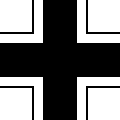This article needs additional citations for verification .(May 2021) |
This is a list of VK-designated tanks made by Germany from 1930s until 1945.
Contents
Versuchskonstruktion (abbreviated to VK or Vs.Kfz.) from Versuchs Kraftfahrzeug meaning "research/experimental vehicle,"[ citation needed ] was used in the names of some German experimental or prototype tanks produced before and during World War II. VK term was also referred to as Vollketten' ( "fully tracked").
The designation format was VK XX.XX (X). For example, in VK 30.01 (H) VK meaning Volketten, 30 for weight of 30 tonnes, and (H) denoting the manufacturer Henschel.
Some designation layouts were different, like the VK XX or VK XXX (also called Vs.Kfz. XX or Vs.Kfz. XXX). For example, the Leichttraktor known as VK 31 (or Vs.Kfz. 31) with VK meaning Volketten (Vs. Kfz. meaning Versuchskampffahrzeug), and number "31" denoting the year of development.



